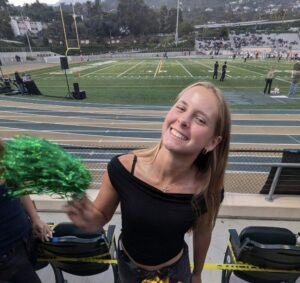It was announced in the summer before this current school year by the Santa Barbara Unified School District that an Ethnic Studies course would be taking place in the district’s high schools. Added on to that fact, it would also be made a graduation requirement for the new freshman class and for the rest of the future students at said high schools. To learn more information about this new course, I interviewed the head of the ethnic studies program at SBHS, Mr. Joe Velasco. When asked about whether the district already had this course in plans or if external forces played a role in the forming of it, he stated that “this class has been in the works for quite a number of years through the work of Ethnic Studies Now! Santa Barbara which is part of a statewide organization”. Velasco described Ethnic Studies Now! as a community grassroots group that has been lobbying the school district to create a class on ethnic studies that would be made a graduation requirement. The schools already had several courses in place like Mexican American Lit., which Velasco actually used to teach as an alternative to English 12, and Black Studies and Social Dialogues. In 2015 ES Now! began to organize both students and community members to lobby the district which took a few years but when the resolution finally passed in 2018, the district reached out to Velasco and other teachers in the district to come together and begin brainstorming what an English Ethnic studies course would look like.
They’ve been working on this for the last couple of years and last year San Marcos High School piloted the English Ethnic Studies course and Dos Pueblos High School piloted the history/social studies Ethnic Studies course. This year both classes are being offered at all three sites (SBHS, SMHS, DPHS), and there are 7 sections of English 9 with an emphasis on Ethic Studies. And soon it will also be offered at the continuation schools including La Cuesta High School. Concerning the actual course plan, Velasco states that they have consultants who are from UC Santa Barbara, Cal State Northridge and San Francisco State as well as state organizers and that they have really taken a look at the idea of intersectionality in relation to Ethnic Studies. So this would include not only Critical Race Theory, but also LBGTQ issues, gender issues, etc. “We are taking a look at literature and non-fiction texts through these lenses while at the same time trying to balance this out with the Common Core English standards that are part of any good English class. Our team of teachers has been working since early last year to create a curriculum map that includes a wide variety of voices that are normally not heard in a standard English class”.
I asked Velasco if the course would be focused on specific ethnicities or if it would be based off of a more of a broad viewpoint, and he said, “The idea of a broad view was that if students were excited by some of the things that they were learning in either course, they can continue taking courses that were more specific which include Black Studies or Mexican American Lit or even classes at Santa Barbara City College”. The big ideas that the class would be focused on would be: Why is race a social construct? What is the difference between race, nationality, and ethnicity? They want to be able to give students the skills to be able to speak about these issues more eloquently.
When asked what the main goal the district hopes to achieve with this class, he said that the district wants to mirror our population of students in our classes to make sure that students are reading about and/or studying people of color and their contributions to society at large. Velasco says, “Too often we’ve seen a majority of writers and majority of thinkers coming from the dominant culture which is usually white, male, and Christian. When it comes to literature or history, how do we take a look at these critically and how do we expand our scope of what it means to be American? What does it mean to be a citizen really?” The second goal that he stated was to help people who were not part of the minority, so white or part of the “dominant culture”, understand how to be allies and to recognize and be aware of their privilege.
When I spoke with Velasco, he told me that when he started teaching his Mexican American Lit. class he had many students come up to him saying that he was the first teacher they had that looked like them, and the first that taught them history/literature that they never had access to and didn’t even know existed. Talking with him a bit more he tells me how our generation can really incite change if we wanted to, and to remember, “in order to change things, minds have to be changed first”.








Be First to Comment